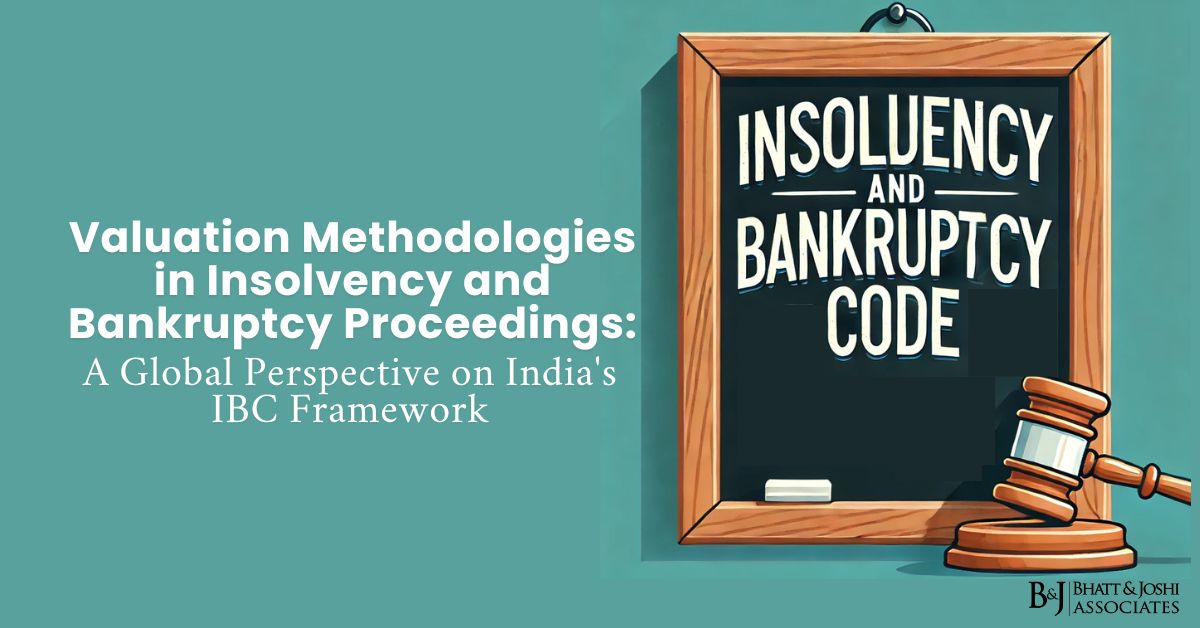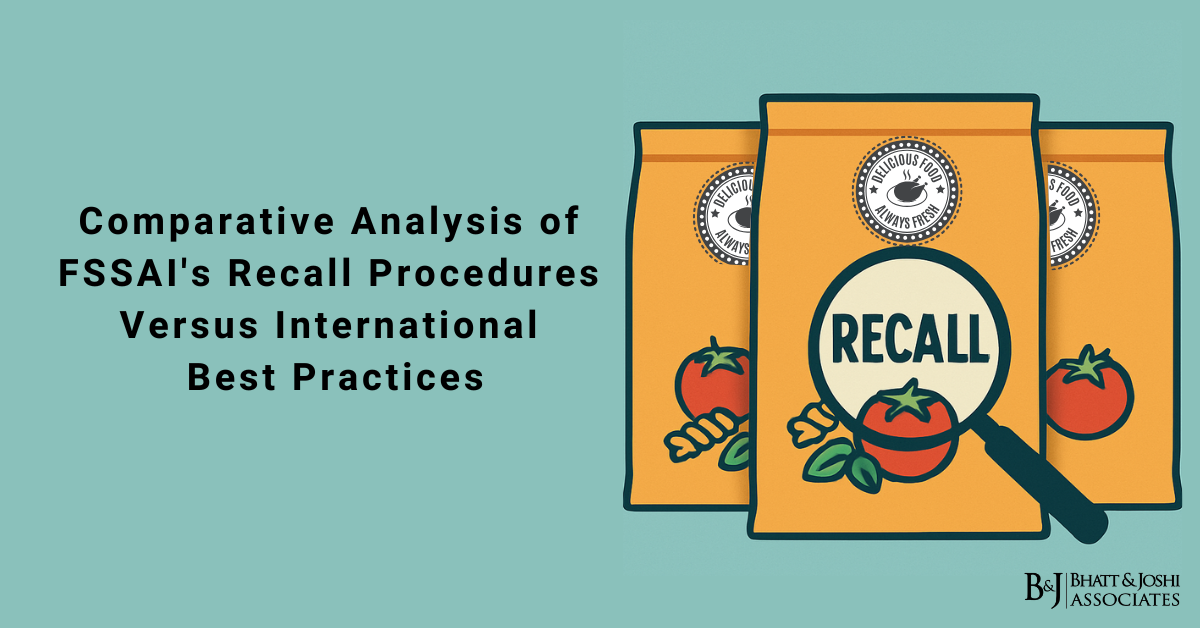Introduction
The concept of valuation lies at the heart of any insolvency regime, serving as the foundational pillar that determines recovery outcomes, influences creditor decisions, and ultimately shapes the effectiveness of bankruptcy laws. Since its enactment in 2016, India’s Insolvency and Bankruptcy Code (IBC) has placed significant emphasis on the valuation process as a critical mechanism for asset maximization and stakeholder protection. This comprehensive analysis explores the multifaceted dimensions of valuation under the IBC framework, examining its theoretical underpinnings, practical challenges, international comparisons, and the evolving jurisprudence that continues to shape its implementation.
The Conceptual Framework of Valuation in Insolvency Proceedings
Justice Louis Brandeis in the landmark case of Missouri ex rel. Southwestern Bell Telephone Co v. Public Service Commission astutely observed that “value is a word of many meanings”. This profound statement encapsulates the inherent complexity of valuation in insolvency proceedings. The determination of value is not merely a mathematical calculation but a nuanced assessment that incorporates multiple dimensions including market value, value to owner, utility cost, fair value, intrinsic value, justified price, and normal value – each critical to different stakeholders in bankruptcy proceedings.
Valuation in the insolvency context presents unique challenges compared to standard business valuations. When a company enters insolvency, traditional valuation metrics may become less reliable due to financial distress, operational disruptions, and market perceptions. The valuation methodology must therefore adapt to capture both the current economic reality and the potential recovery scenarios available to creditors.
Theoretical Underpinnings of Valuation in Distressed Scenarios
The valuation of distressed firms follows the same fundamental principles as valuing healthy ones, but with significantly higher complexity and uncertainty. The process involves three key steps: estimating the company’s value, establishing the appropriate standard, and applying methodologies specific to distressed scenarios. Unlike regular valuations, distressed valuations must address the bifurcated question of whether to apply a going-concern premise or a liquidation premise.
The going-concern premise assumes the business will continue operations into the future, while liquidation value assumes operations will cease and assets will be sold off either in an orderly manner or through forced sale. This critical determination shapes the entire valuation framework and ultimately influences recovery outcomes for all stakeholders.
Valuation Framework Under India’s IBC Regime
Objectives of Valuation under IBC
The IBC established valuation as one of its cornerstone objectives to ensure value maximization, timely resolution of the Corporate Insolvency Resolution Process (CIRP), and balanced consideration of stakeholder interests. The valuation process under IBC serves multiple strategic functions:
- It provides an objective benchmark for assessing resolution plans
- It establishes a baseline for creditor negotiations with prospective resolution applicants
- It informs the Committee of Creditors (CoC) in their decision-making process
- It facilitates transparency and fairness in the insolvency resolution mechanism
- It serves as a comparative measure against the liquidation scenario to ensure optimal outcomes
The Supreme Court of India in the landmark case of Swiss Ribbons Pvt. Ltd & Anr. v. Union of India emphatically affirmed that “maximization of the value of the assets of the corporate debtor” constitutes the core objective of the IBC. The court noted that unless reorganization is effected in a time-bound manner, asset values will inevitably deplete, hindering the corporate debtor’s potential to operate as a going concern.
Categorical Classification of Valuation Types under IBC
The IBC regulatory framework delineates two primary types of valuation that must be conducted during insolvency proceedings:
1. Fair Value
As defined in Regulation 2(hb) of the IBBI (Insolvency Resolution Process for Corporate Persons) Regulations, 2016, Fair Value represents “the estimated realizable value of the assets of the corporate debtor, if they were to be exchanged on the insolvency commencement date between a willing buyer and a willing seller in an arm’s length transaction, after proper marketing and where the parties had acted knowledgeably, prudently and without compulsion”. This definition aligns with internationally accepted valuation standards and emphasizes the following key elements:
- The transaction is hypothetical but realistic
- Both parties are willing participants without undue pressure
- The assessment is anchored to the Insolvency Commencement Date (ICD)
- Proper marketing is assumed to have occurred
- Parties possess adequate information about the assets
2. Liquidation Value
Complementing the Fair Value assessment, Liquidation Value is defined in Regulation 2(k) as “the estimated realizable value of the assets of the corporate debtor, if the corporate debtor were to be liquidated on the insolvency commencement date”. This represents a distress-sale scenario where assets must be sold within a compressed timeframe, often resulting in significantly lower valuations compared to Fair Value assessments.
The dichotomy between these two valuation approaches creates a structured framework that provides the CoC with both the best-case scenario (Fair Value) and a fallback position (Liquidation Value), enabling more informed decision-making regarding resolution plans.
The Institutionalized Role of Registered Valuers Under IBC
Regulatory Framework for Registered Valuers
The IBC ecosystem operates through a network of specialized professionals, with Registered Valuers (RVs) occupying a position of critical importance. These professionals are entrusted with determining the current market value of property, land, securities, the net worth of the company, and other assets or liabilities under the provisions of both the Companies Act, 2013, and the IBC, 2016.
The regulatory architecture for RVs includes:
- The Companies (Registered Valuers and Valuation) Rules, 2017, which establish qualification requirements, registration procedures, and conduct standards
- The IBBI (Registered Valuers) Regulations, 2017, which provide the operational framework for valuation professionals
- Registered Valuer Organizations (RVOs), which serve as frontline regulators for valuers
RVs are categorized into three asset classes based on their expertise:
- Plant and Machinery (P&M)
- Land and Building (L&B)
- Securities or Financial Assets
Procedural Mandates for Valuation Under IBC
The IBBI (CIRP) Regulations, 2016, prescribe a structured procedural framework for the valuation process:
- Dual Valuer Requirement: Regulation 27 mandates the appointment of two registered valuers to determine both fair value and liquidation value of the corporate debtor
- Time-Bound Execution: Valuers must be appointed within seven days of the resolution professional’s appointment and must submit valuation reports within a specified timeframe
- Physical Verification Requirement: Valuers must physically verify the inventory and fixed assets of the corporate debtor before submitting their assessment
- Resolution of Valuation Discrepancies: If the two estimates differ “significantly” (defined as a difference of 25% or more in liquidation value within an asset class), the resolution professional may appoint a third valuer. The calculation formula specified is (L1-L2)/L1, where L1 represents the higher valuation and L2 the lower valuation
- Determination of Final Value: In cases where a third valuer is appointed, the average of the two closest estimates is considered the final fair value or liquidation value
- Fast Track Provisions: For fast-track CIRP cases, Regulation 26 permits appointment of a single registered valuer, with similar standards for valuation methodology
This structured approach aims to minimize subjectivity and enhance consistency in the valuation process, although significant challenges remain, as discussed later in this analysis.
Methodological Approaches to Valuation in Insolvency
Valuation Techniques in the CIRP Process
Valuation under the CIRP is a methodical exercise conducted by IBBI-recognized Registered Valuers, employing a range of internationally accepted insolvency valuation methods.
- Income Approach: Primarily uses Discounted Cash Flow (DCF) methodology, which measures the present value of projected future cash flows. This approach is particularly relevant for going-concern valuations where future earning potential is a significant consideration.
- Market Approach: Utilizes market multiples from comparable companies or transactions to determine relative value. This approach is effective when suitable market comparables exist but may be challenging in distressed scenarios where comparable transactions are limited.
- Replacement Cost Approach: Estimates the cost to replace assets at current market prices, adjusted for depreciation and technological obsolescence. This is particularly useful for specialized assets where market transactions are infrequent.
- Asset Value Approach: Focuses on the company’s balance sheet, valuing individual assets and liabilities. This method is often employed when liquidation is the likely outcome or when a company’s value is primarily derived from its tangible assets rather than future earning potential.
The selection of appropriate methodologies depends on numerous factors including the nature of the business, asset composition, industry dynamics, and the likely resolution outcome. Best practice typically involves employing multiple approaches to develop a range of values that provide a more robust assessment.
Valuation Anchoring to the Insolvency Commencement Date
A distinctive feature of IBC valuation is the temporal anchoring to the Insolvency Commencement Date (ICD). This provides a fixed reference point for all valuations, ensuring consistency and preventing manipulation of the timeline to influence valuations. However, this approach also presents challenges when proceedings extend over prolonged periods, as market conditions and asset values may evolve significantly since the ICD.
Comparative Analysis: International Valuation Standards in Bankruptcy
Global Frameworks for Insolvency Valuation
The development of valuation standards in bankruptcy contexts varies significantly across jurisdictions, though a trend toward international harmonization is emerging:
- International Valuation Standards (IVS): The International Valuation Standards Council (IVSC) has developed a comprehensive framework of standards that serve as the global benchmark for valuation practice. The IVS 2022 (effective January 2025) represents the latest iteration, addressing specific issues related to distressed assets and liquidation scenarios. The IVS framework includes specialized bases of value such as Liquidation Value and Replacement Value, which are particularly relevant in bankruptcy proceedings.
- US Chapter 11 Approach: The US bankruptcy system places significant emphasis on valuation during reorganization proceedings. The Bankruptcy Code §506 specifies that value determination must consider “the purpose of the valuation and of the proposed disposition or use of such property”. Valuation in US bankruptcy proceedings occurs at multiple stages, including adequate protection assessments, plan confirmation, and bankruptcy litigation contexts such as preference actions and fraudulent transfer claims.
- UK Insolvency Valuation Framework: The UK employs a structured approach to valuation in insolvency, with guidance from the Bank of England specifying four distinct valuation stages: failing or likely to fail assessment, asset and liability valuation, equity valuation, and estimated insolvency valuation. The UK framework emphasizes the distinction between “Hold Value” and “Disposal Value” as critical concepts in resolution planning.
Adoption of International Standards in India’s IBC Context
The IBC regulations require valuation to be conducted “in accordance with internationally accepted valuation standards”, but do not explicitly mandate which standards should be applied. This ambiguity has led to inconsistencies in practice, with valuers affiliated with different Registered Valuer Organizations (RVOs) potentially following different methodological approaches.
The IBBI has been working toward greater alignment with international standards, recognizing that inconsistent valuation practices undermine the effectiveness of the resolution process. India’s infrastructure valuation association has become a corporate member of the IVSC, signaling a commitment to international standards and valuation professionalism. However, full adoption and implementation of a unified valuation framework remains a work in progress.
Critical Challenges in the Valuation Ecosystem Under IBC
Empirical Assessment of Valuation Inconsistencies
One of the most significant challenges in the IBC valuation framework is the persistent inconsistency in valuation estimates provided by different registered valuers. The current system, which mandates multiple valuers, can lead to substantial discrepancies in assessments of the same assets.
These inconsistencies manifest in several ways:
- Methodological Divergence: Different valuers may employ varying methodological approaches or assumptions, leading to substantially different outcomes even when applied to identical assets.
- Third Valuer Discrepancies: In cases where a third valuer is appointed due to significant differences between the first two, there have been instances where the third valuation diverges drastically from both previous assessments, further complicating the resolution process. In one notable case referenced in the search results, initial valuations ranged from INR 121.01 crore to INR 126.30 crore, while a third valuer estimated the liquidation value at only INR 52.69 crore.
- Interpretation Challenges: The 25% threshold for “significant difference” may itself be subject to interpretation, particularly in complex asset classes or when applying different valuation methodologies. In a case before the NCLAT Chennai, the tribunal deemed a difference of 15.62% between valuations as “minimal,” noting that values provided by registered valuers “are only estimates” and that differences are to be expected.
Temporal Challenges in Valuation Under IBC
The time-sensitive nature of insolvency proceedings creates additional challenges for the valuation process:
- Delay-Related Value Deterioration: The Supreme Court has emphasized that unless reorganization occurs in a time-bound manner, asset values will inevitably deplete. However, the average CIRP process in India takes approximately 384 days to complete, during which significant changes in asset condition, market dynamics, and business operations may occur.
- Valuation Date Constraints: The regulatory requirement to anchor valuations to the Insolvency Commencement Date creates a temporal disconnect when proceedings extend over prolonged periods, potentially rendering initial valuations obsolete by the time resolution decisions are made.
- Market Perception Issues: Courts have recognized that “markets tend to undervalue entities in bankruptcy,” necessitating adjustments to market-based approaches in certain contexts. This market perception bias further complicates the already challenging task of accurate valuation.
Regulatory and Structural Issues
Several structural and regulatory factors compound the valuation challenges under IBC:
- Valuation Standard Ambiguity: While the IBC mandates adherence to “internationally accepted valuation standards,” it does not specify which standards should be applied, leading to inconsistent practices among valuers.
- Information Asymmetry: Valuers often face challenges related to incomplete financial information, limited access to operational data, and difficulties in physical verification of assets, particularly in contentious insolvency cases.
- Credential Disparities: Variations in the qualification, experience, and specific expertise of registered valuers can lead to significant differences in the quality and reliability of valuations.
- Incentive Misalignment: Concerns have been raised about potential “perverse incentive structures” when parties pay valuation professionals based on achieving specific valuation outcomes, potentially compromising objectivity.
Judicial Interpretation and Evolving Jurisprudence
Supreme Court Perspectives on Valuation Under IBC
The Indian judiciary has played a significant role in shaping the valuation framework under IBC through several landmark judgments:
- Swiss Ribbons Case: In Swiss Ribbons Pvt. Ltd & Anr. v. Union of India, the Supreme Court unequivocally identified maximization of asset value as a core objective of the IBC. The court emphasized that timely reorganization is essential to prevent value deterioration and enable the corporate debtor to operate as a going concern.
- Ebix Singapore Case: In Ebix Singapore Private Limited v. Committee of Creditors of Educomp Solutions Limited & Anr, the court reinforced that timely implementation of resolution plans is crucial to protect against asset dissipation. This ruling underscores the temporal dimension of valuation and the need for expeditious processes.
NCLAT Interpretations and Practical Applications
The National Company Law Appellate Tribunal (NCLAT) has further refined the application of valuation principles in specific cases:
- Binani Industries Judgment: In Binani Industries Limited Vs. Bank of Baroda, the NCLAT articulated a hierarchical framework of IBC objectives, positioning “resolution” as the first-order objective, “maximation of the value of assets” as the second-order objective, and “promotion of entrepreneurship and credit availability” as the third-order objective.
- Variance Threshold Interpretation: In Dr. Vijay Radhakrishnan Vs. Bijoy P Pulipra, the NCLAT Chennai considered a difference of 15.62% between two valuers as “minimal,” suggesting a practical interpretation of the “significantly different” threshold below the 25% regulatory definition. The tribunal noted that valuation estimates “can at best be an aid to the Committee of Creditors” in making commercial decisions.
These judicial interpretations collectively emphasize the instrumental role of valuation in achieving the broader objectives of the IBC while acknowledging the inherent limitations and practical challenges in the valuation process.
Strategic Recommendations for Enhancing the Valuation Framework Under IBC
Regulatory Reforms and Standardization
- Unified Valuation Standards: The IBBI should adopt a comprehensive set of valuation standards specifically tailored to the insolvency context, drawing from the International Valuation Standards but adapted to India’s unique economic and legal environment.
- Methodological Guidance: Detailed guidance on the appropriate application of different valuation methodologies for specific industry sectors and asset classes would enhance consistency and reduce unwarranted discrepancies.
- Time-Sensitive Valuation Framework: Develop mechanisms for updating valuations when CIRP proceedings extend beyond a specified duration, ensuring that decisions are based on current economic realities while maintaining procedural integrity.
Professional Capacity Enhancement
- Specialized Certification: Implement advanced certification requirements for registered valuers participating in insolvency proceedings, focusing on distressed asset valuation techniques and bankruptcy-specific considerations.
- Inter-Disciplinary Expertise: Encourage the development of valuation teams that combine financial, legal, and industry-specific expertise to produce more comprehensive and nuanced valuation reports.
- Knowledge Repository: Establish a centralized database of anonymized valuation reports and methodologies from previous insolvency cases to build a knowledge base that informs future valuations and promotes standardization.
Procedural Improvements
- Collaborative Valuation Process: Consider a collaborative approach where appointed valuers work together to resolve methodological differences before finalizing independent reports, reducing extreme discrepancies while maintaining the benefits of multiple perspectives.
- Structured Disclosure Requirements: Implement standardized disclosure formats for valuation reports that clearly articulate key assumptions, limitations, methodologies, and sensitivity analyses, enhancing transparency and facilitating informed decision-making by the CoC.
- Objective Third Valuer Selection: Develop a systematic approach for selecting third valuers when required, potentially through a blind assignment mechanism that minimizes potential bias or strategic appointments.
Conclusion: The Path Forward for Valuation Under IBC
Valuation under the Insolvency and Bankruptcy Code represents a critical intersection of financial expertise, legal frameworks, and economic analysis. As India’s insolvency regime continues to evolve, the refinement of valuation practices will play an increasingly important role in achieving the twin objectives of value maximization and stakeholder protection.
The current framework has established a solid foundation, but persistent challenges related to consistency, timeliness, and methodological rigor necessitate continued attention from regulators, practitioners, and the judiciary. The incorporation of international best practices, technological innovations, and specialized expertise will be essential in addressing these challenges.
Ultimately, an effective valuation framework must balance the need for accuracy and comprehensiveness with the practical constraints of the insolvency context, including time limitations, information asymmetries, and resource constraints. By addressing the identified challenges and implementing strategic reforms, India’s IBC valuation ecosystem can better serve its intended purpose: providing a reliable and objective basis for informed decision-making in complex insolvency scenarios.
The journey toward a more robust valuation framework is ongoing, but each incremental improvement brings the system closer to its ideal state—one where stakeholders can trust that asset valuations reflect economic realities, enabling optimal outcomes in even the most challenging insolvency situations.
Written by : Aditya bhatt
Associate: Bhatt and Joshi Associates














